Abstract
Sorbitol dehydrogenase (l-iditol:NAD+ oxidoreductase, EC 1.1.1.14) has been detected and characterized from apple (Malus domestica cv. Granny Smith) mesocarp tissue cultures. The enzyme oxidized sorbitol, xylitol, l-arabitol, ribitol, and l-threitol in the presence of NAD. NADP could not replace NAD. Mannitol was slightly oxidized (8% of sorbitol). Other polyols that did not serve as substrate were galactitol, myo-inositol, d-arabitol, erythritol, and glycerol. The dehydrogenase oxidized NADH in the presence of d-fructose or l-sorbose. No detectable activity was observed with d-tagatose. NADPH could partially substitute for NADH.
Maximum rate of NAD reduction in the presence of sorbitol occurred in tris(hydroxymethyl)aminomethane-HCl buffer (pH 9), or in 2-amino-2-methyl-1,3-propanediol buffer (pH 9.5). Maximum rates of NADH oxidation in the presence of fructose were observed between pH 5.7 and 7.0 with phosphate buffer. Reaction rates increased with increasing temperature up to 60 C. The Km for sorbitol and xylitol oxidation were 86 millimolar and 37 millimolar, respectively. The Km for fructose reduction was 1.5 molar.
Sorbitol oxidation was completely inhibited by heavy metal ions, iodoacetate, p-chloromercuribenzoate, and cysteine. ZnSO4 (0.25 millimolar) reversed the cysteine inhibition. It is suggested that apple sorbitol dehydrogenase contains sulfhydryl groups and requires a metal ion for full activity.
Full text
PDF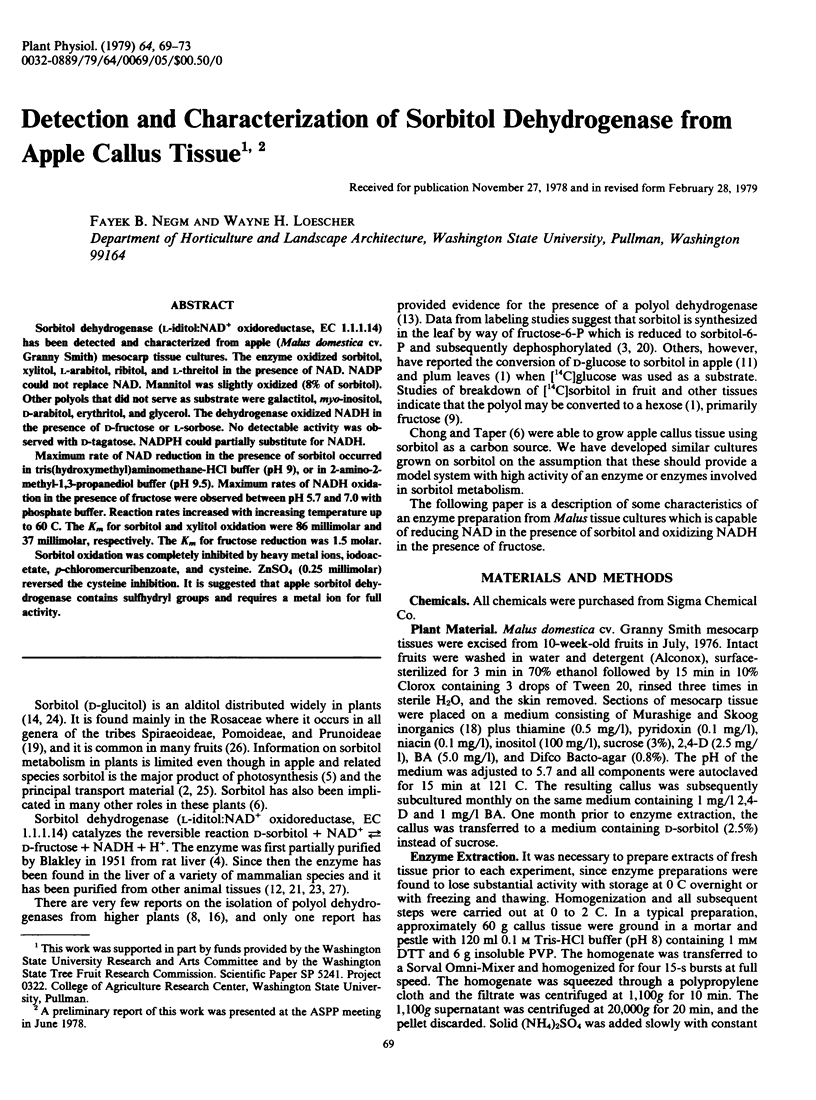
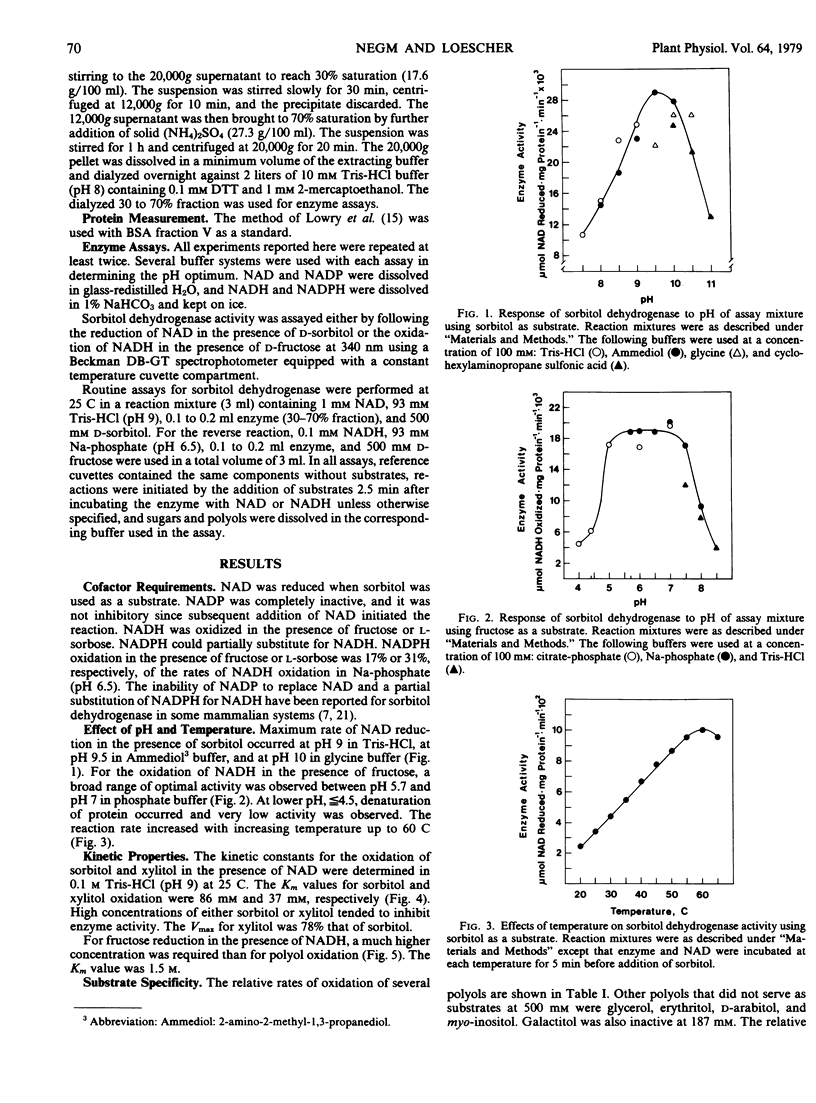
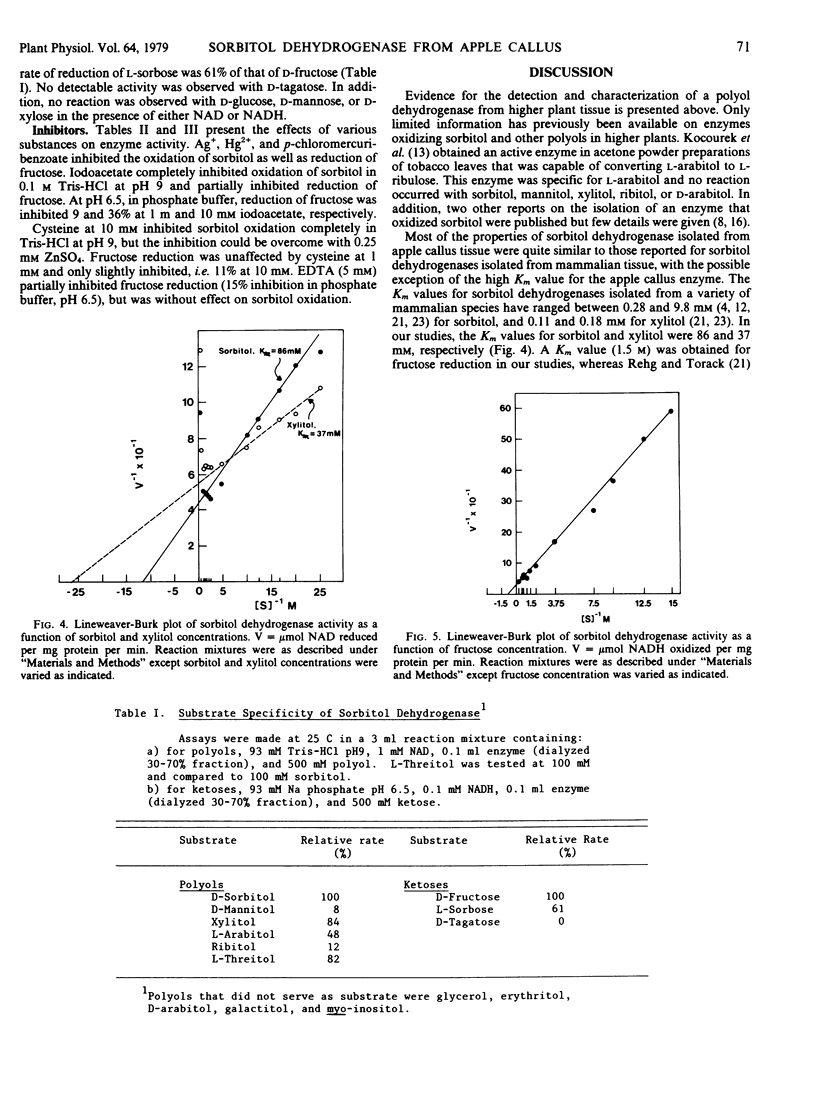
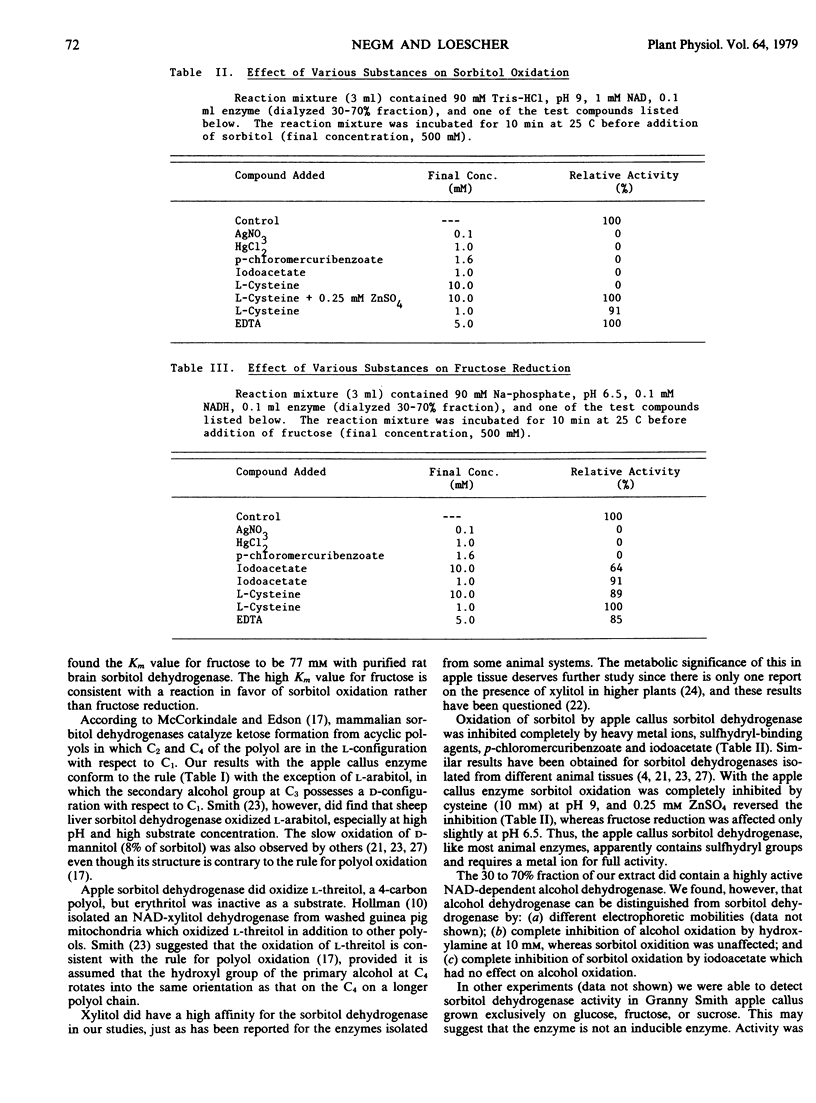
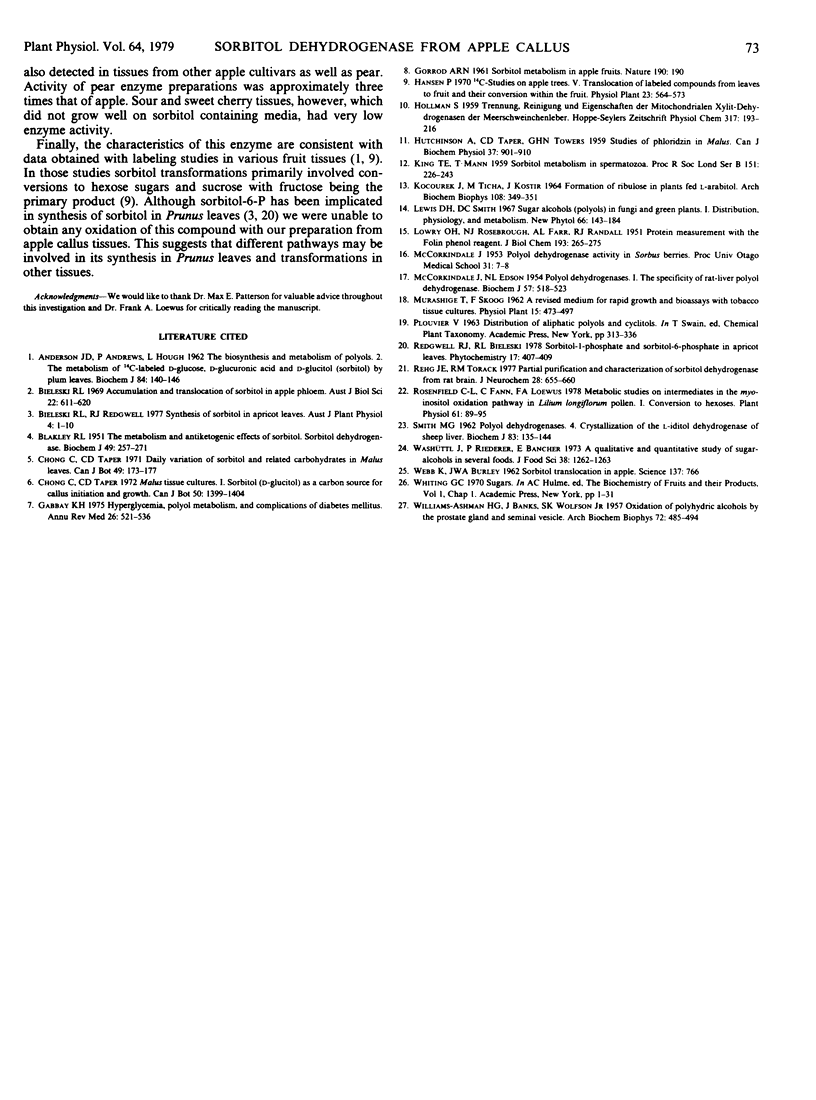
Selected References
These references are in PubMed. This may not be the complete list of references from this article.
- ANDERSON J. D., ANDREWS P., HOUGH L. The biosynthesis and metabolism of polyols. 2. The metabolism of 14C-labelled D-glucose, D-glucuronic acid and D-glucitol (sorbitol) by plum leaves. Biochem J. 1962 Jul;84:140–146. doi: 10.1042/bj0840140. [DOI] [PMC free article] [PubMed] [Google Scholar]
- BLAKLEY R. L. The metabolism and antiketogenic effects of sorbitol; sorbitol dehydrogenase. Biochem J. 1951 Aug;49(3):257–271. doi: 10.1042/bj0490257. [DOI] [PMC free article] [PubMed] [Google Scholar]
- Gabbay K. H. Hyperglycemia, polyol metabolism, and complications of diabetes mellitus. Annu Rev Med. 1975;26:521–536. doi: 10.1146/annurev.me.26.020175.002513. [DOI] [PubMed] [Google Scholar]
- HUTCHINSON A., TAPER C. D., TOWERS G. H. Studies of phloridzin in Malus. Can J Biochem Physiol. 1959 Jul;37(7):901–910. [PubMed] [Google Scholar]
- KOCOUREK J., TICHA M., KOSTIR J. FORMATION OF RIBULOSE IN PLANTS FED L-ARABITOL. Arch Biochem Biophys. 1964 Nov;108:349–351. doi: 10.1016/0003-9861(64)90396-0. [DOI] [PubMed] [Google Scholar]
- LOWRY O. H., ROSEBROUGH N. J., FARR A. L., RANDALL R. J. Protein measurement with the Folin phenol reagent. J Biol Chem. 1951 Nov;193(1):265–275. [PubMed] [Google Scholar]
- McCORKINDALE J., EDSON N. L. Polyol dehydrogenases. I. The specificity of rat-liver polyol dehydrogenase. Biochem J. 1954 Jul;57(3):518–523. doi: 10.1042/bj0570518. [DOI] [PMC free article] [PubMed] [Google Scholar]
- Rehg J. E., Torack R. M. Partial purification and characterization of sorbitol dehydrogenase from rat brain. J Neurochem. 1977 Mar;28(3):655–660. doi: 10.1111/j.1471-4159.1977.tb10438.x. [DOI] [PubMed] [Google Scholar]
- Rosenfield C. L., Fann C., Loewus F. A. Metabolic Studies on Intermediates in the myo-Inositol Oxidation Pathway in Lilium longiflorum Pollen: I. Conversion to Hexoses. Plant Physiol. 1978 Jan;61(1):89–95. doi: 10.1104/pp.61.1.89. [DOI] [PMC free article] [PubMed] [Google Scholar]
- SMITH M. G. Polyol dehydrogenases. 4. Crystallization of the L-iditol dehydrogenase of sheep liver. Biochem J. 1962 Apr;83:135–144. doi: 10.1042/bj0830135. [DOI] [PMC free article] [PubMed] [Google Scholar]
- WILLIAMS-ASHMAN H. G., BANKS J., WOLFSON S. K., Jr Oxidation of polyhydric alcohols by the prostate gland and seminal vesicle. Arch Biochem Biophys. 1957 Dec;72(2):485–494. doi: 10.1016/0003-9861(57)90224-2. [DOI] [PubMed] [Google Scholar]
- Webb K. L., Burley J. W. Sorbitol Translocation in Apple. Science. 1962 Sep 7;137(3532):766–766. doi: 10.1126/science.137.3532.766. [DOI] [PubMed] [Google Scholar]


